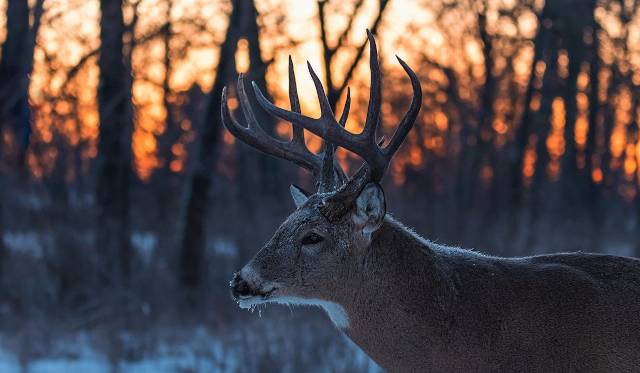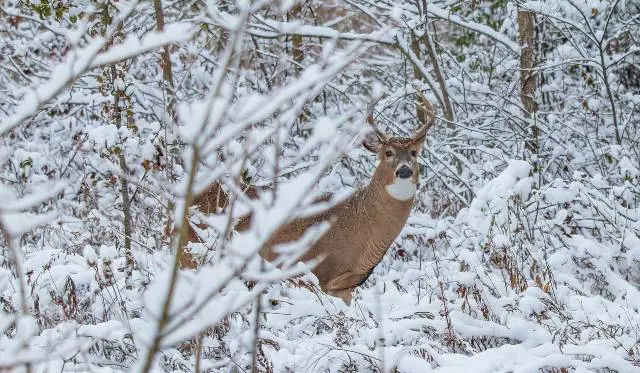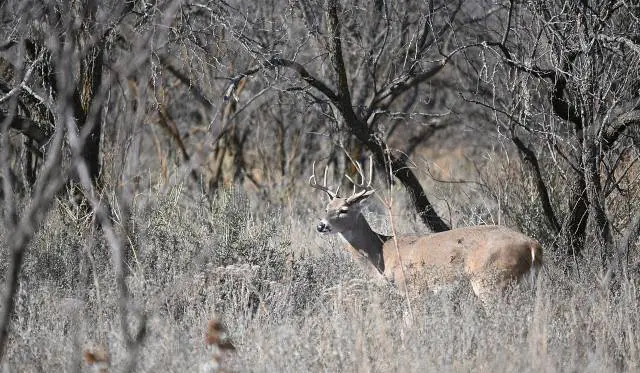Timing is critical when it comes to deer hunting, as it can mean the difference between a successful hunt and coming home empty-handed. Factors such as time of day, weather, season, and deer behavior can all have a significant impact on deer movement patterns. Understanding these factors is essential for identifying the best deer hunting times.

By planning your trip around the best times to deer hunt, you can increase your chances of encountering active deer. Whether you’re a seasoned hunter or a beginner, knowing the optimal deer hunting times is an essential part of any successful hunting strategy.
Contents
Best Times to Hunt Deer
On average, the best times of day to hunt deer are during the early morning and late afternoon. These times are often referred to as the “golden hours.” During these prime deer hunting times, deer are more likely to feed and move around in search of food.
Early Morning
Deer are most active during the early morning hours, typically between dawn and 10 a.m. This is a great time to catch them out grazing in fields or moving from their bedding areas to feeding areas.
During the early morning hours, deer are often more relaxed and less cautious, making them more vulnerable to hunters. This is because they have been feeding and resting (depending on their patterns) throughout the night, and are often less alert during the early morning hours.
Additionally, the low angle of the sun during this time can make it easier to spot a deer moving around, as the shadows and contrast can help them stand out. However, it’s important to note that the early morning hours can vary depending on the time of year and your deer hunting location. In some areas, deer may be more active earlier in the morning, while in other areas, they may be more active later in the morning.
One of my best early morning hunting strategies is to set up near a feeding area or a trail that leads from a bedding area to a feeding area. It is essential to be quiet and stealthy, as any sudden movements or noises can alert nearby deer. Using cover such as trees or brush can help you stay concealed and increase your chances of getting a good look at a deer.
Late Afternoon
Deer are also active during the late afternoon, typically between 3 p.m. and dusk. This is when they begin to move towards deer beds.
During the late afternoon, deer are often more active as they begin to move from feeding areas to bedding areas. They have been feeding throughout the day and are now starting to move from deer feed sources towards their preferred evening secure bedding area for the night.
I like to use scents and calls to attract deer as a late afternoon strategy. During the late afternoon hours, bucks may be more responsive to calls and scents as they are beginning to move. Using a grunt call or a bleat call can help you mimic the sounds of a deer and attract them to your location. Use these scents and calls in moderation, as overuse can make deer wary and less likely to respond.
During the Rut
The rut, or mating season, is one of the best times to hunt deer. Bucks are more active during this time, as they are searching for does to mate with. The rut typically occurs in late October to early November.
During the rut, bucks are often more active and less cautious as they are focused on finding a mate. This becomes a huge advantage for many hunters as deer are more likely to move around during daylight hours and be less aware of their surroundings. Additionally, bucks will often make scrapes and rubs on trees to mark their territory and attract does, making it easier for hunters to locate them.
Bucks will often respond to calls and scents that mimic the sounds and smells of a doe in estrus, during the rut. Focus on areas where does are likely to be, as bucks will often be nearby during the rut. This can include feeding areas, bedding areas, and travel corridors between these areas. Be patient but persistent.
During Cold Weather
Deer are more active during cold weather, as they need to move around to stay warm. This is especially true during the late season, when food sources are scarce.
With cold weather, deer are often more active. A deer’s metabolism increases in colder temperatures, and they need to feed more frequently to maintain their body heat.
Additionally, cold weather can disrupt deer feeding times and patterns, as deer may need to search for new food sources if their preferred sources are covered in snow or ice.
Target areas where food sources are available and accessible. This can include agricultural fields, food plots, and natural food sources such as acorns. Also seek out areas where deer are likely to be seeking shelter from the cold, such as thick cover or south-facing slopes. Deer will often bed down in cover areas providing thermal protection and a break from the wind.

Best Deer Hunting Times By Zipcode
The best deer hunting times can vary by zipcode due to several factors including food availability, weather conditions, predator and hunting pressure, sun position, moon phase, and the season.
Deer Movement
One of the most significant factors is the availability of food sources in the area. Deer tend to move around in search of food, and the types of food available can vary depending on the location.
Incoming and outgoing weather systems will produce periods of deer movement as deer often becoming more active during periods of temperature change. Deer movement will alter as they become more cautious and avoid areas where predator activity is high.
Sun Position and Moon Phase
The moon phase and position of the sun in relation to the earth is a critical piece of deer hunting information for determining the best deer hunting times by zipcode. A solunar forecast will provide you with accurate solar and lunar detail for your hunt.
Season
Season can have a significant impact on deer movement patterns and the best deer hunting times. During the Fall season, deer are often more active as they search for food to build up their fat reserves for the winter. This can result in changes in feeding patterns, as deer may shift their feeding locations and become more active during daylight hours.
During the Breeding season, which typically occurs in late October through early December, there should be a noticeable change in deer behavior as mature bucks become more active and are on the hunt searching for doe during daylight hours.
In the Winter season, deer need to move around more to find food and avoid areas with deep snow or ice. This can result in changes in travel patterns and feeding locations, as deer will shift their movements to areas with more accessible food sources.
The Spring season can be a time of year when deer populations are more vulnerable to predators, as fawns are born and are more susceptible. Deer will also be in search for food and cover as the ground thaws and the food growing season begins.

Deer Hunting Times Summary
While there’s no guaranteed way to predict when a deer will be active, understanding the factors that can influence their movement patterns can greatly increase your chances of success.
Four of the best deer hunting times include early morning, later afternoon, during the rut, and during colder weather. All can be a great time to hunt deer, but it’s important to do your research and plan accordingly using the unique factors specific to your hunting area.
Best Deer Hunting Times: FAQs
What are the best hours for hunting deer?
The best hours for hunting deer are typically during the early morning between dawn and 10 a.m. and late afternoon between 3 p.m. and dusk.
Is morning or night better for deer hunting?
Both morning and night can be great for deer hunting, but the early morning and late afternoon are typically the most productive times.
Is it worth deer hunting all day?
Yes, it can definitely be worth deer hunting all day, particularly during the breeding season or when weather conditions are favorable. Your odds of hunting success increase with every hour you are out actively hunting.
How early should I be in the woods for deer hunting?
At a minimum, I recommend being in your hunting stand at least 30 minutes prior to prime hunting hours. For example, if you are hunting early morning, you should be in your stand at least 30 minutes before sunrise.
Do deer move in the middle of the day?
Yes, deer do move in the middle of the day. During the summer months, deer are more active during the middle of the day when temperatures are cooler. During the fall and winter, deer move less during the middle of the day and focus their movement around feeding and bedding times.
What hours do deer move the most?
Deer are most active during the predawn hours and during sunrise and sunset. Consult your local sunrise and sunset charts based on your zipcode as the exact hours vary depending on the location and time of year.
